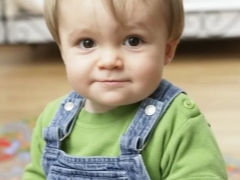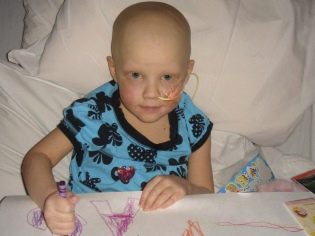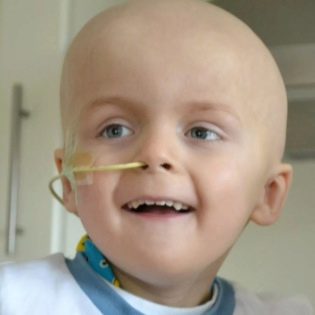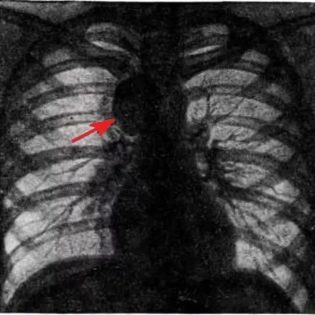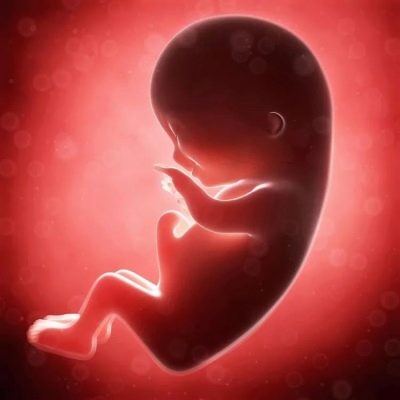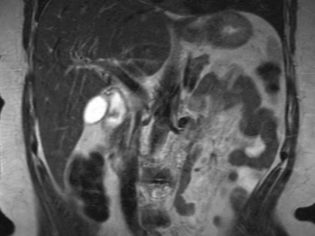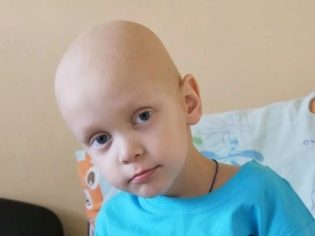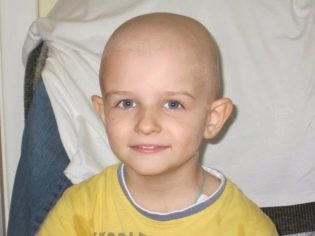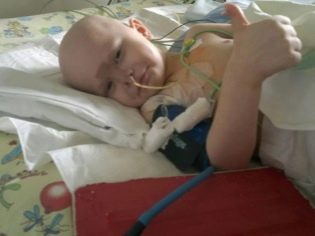Neuroblastoma in children
Oncological diseases, including neuroblastoma, are among the most severe. Such pathologies are of particular importance in children's practice.
What it is?
Neuroblastoma is one of the neoplasms. According to the classification of oncological pathologies, this disease is malignant. This suggests that the course of the disease is very dangerous. Most often, these malignant tumors are recorded in newborns and in children under three years of age.
The course of neuroblastoma is quite aggressive. Predict the outcome and prognosis of the disease is impossible. Neuroblastomas are malignant neoplasms that are related to embryonic tumors. They affect the sympathetic nervous system. Neuroblastoma growth is usually rapid.
However, doctors note one surprising property - the ability to regress. According to statistics, retroperitoneal neuroblastoma occurs most frequently. It occurs, on average, in 85% of cases. The defeat of the ganglia of the sympathetic nervous system due to intensive growth of tumors is less common. Adrenal neuroblastoma occurs in 15-18% of cases.
The incidence in the general population is relatively low. Only one born baby out of one hundred thousand gets a neuroblastoma. The spontaneous transition of a malignant tumor to a benign tumor is also another mystery of this disease.
In the course of time, even with an initially unfavorable prognosis, the disease can turn into a milder form — ganglioneuroma.
Most of the cases, unfortunately, occur quite rapidly and unfavorably. The tumor is characterized by the appearance of a large number of metastases that occur in a variety of internal organs. In this case, the prognosis of the disease deteriorates significantly. Various types of intensive treatment are used to eliminate metastatic cells.
The reasons
Scientists did not come to a consensus on what causes neuroblastoma in children. Currently, there are several scientific theories that provide a rationale for the mechanism and causes of the occurrence of malignant tumors in babies. Thus, according to the hereditary hypothesis in families where there are cases of neuroblastoma, the risk of the birth of babies, in which this disease subsequently develops, significantly increases. However, the probability of this is quite low. It does not exceed 2-3%.
Some experts say that intrauterine infections may contribute to the emergence of various genetic abnormalities. They cause mutations in the genes that lead to a violation of the coding of the main features. Exposure to mutagenic and carcinogenic environmental factors only increases the possibility of having a child with a neuroblastoma. Usually this condition is associated with impaired division and proliferation of adrenal cells in the period of intrauterine growth. "Immature" cellular elements are simply not able to perform their functions, which causes pronounced disorders and abnormalities in the work of the adrenal glands and kidneys.
European researchers believe that the cause of neuroblastoma in babies can be a gene breakdown that occurred during the embryonic stage. At the time of conception, two genetic apparatus merge - the maternal and the father. If at this time there are any mutagenic factors, then mutations will appear in the newly formed daughter cell.Ultimately, this process leads to disruption of cell differentiation and the development of neuroblastoma.
Mutagenic or carcinogenic factors during pregnancy have a significant effect.
So, scientists have found that smoking a mother while carrying a future baby increases the risk of having a baby with neuroblastoma.
Living in environmentally unfriendly areas or the strongest constant stress has a negative effect on the body of a pregnant woman. In some cases, it can also lead to the birth of a child with a neuroblastoma.
Stages
Neuroblastoma can be localized in many organs. If the tumor has developed in the adrenal glands or in the chest, then talk about the sympathoblastoma. This form of the disease can cause dangerous complications. With an excessive increase in the adrenal glands in the amount of paralysis develops. If there is a tumor in the retroperitoneal space, they talk about neurofibrosarcoma. It causes numerous metastases, which are mainly localized in the lymphatic system and bone tissue.
There are several stages of the disease:
- Stage 1 Characterized by the presence of tumors up to ½ cm in size. At this stage of the disease there is no lesion of the lymphatic system and distant metastases. The prognosis for this stage is favorable. When conducting a radical treatment, the survival rate of babies is quite high.
- Stage 2. It is divided into two substages - A and B. It is characterized by the appearance of a neoplasm, from ½ to 1 cm in size. There are no lesions of the lymphatic system and distant metastases. Eliminated by surgery. Stage 2B also requires chemotherapy.
- Stage 3. Characterized by the appearance of tumors more or less than a centimeter in conjunction with other signs. At this stage lymph nodes are already involved in the process. Distant metastases are absent. In some cases, the disease proceeds without involvement of the lymph nodes in the process.
- Stage 4. It is characterized by multiple foci or one solid large neoplasm. Lymph nodes may be involved in the tumor process. At this stage, metastases appear. The chance of recovery in this case is virtually absent. The forecast is extremely unfavorable.
The course and development of the disease depends on many underlying factors.
The prognosis of the disease is affected by the localization of the tumor, its clinical form, the age of the baby, cellular histological proliferation, the stage of tumor growth, and more.
Predicting how the disease will proceed in each case is very difficult. Even experienced oncologists often make mistakes when they talk about the prognosis of the disease and the further outcome.
Symptoms
Signs of neuroblastoma may not be characteristic. The course of the disease gives way to periods of remission and relapse. In a period of complete calm, the severity of adverse symptoms is negligible. A child can lead a normal life. During relapse, the baby’s condition worsens dramatically. In this case, emergency consultation with an oncologist and possible hospitalization in the oncology department for treatment is required.
The clinical manifestations of neuroblastoma are numerous and varied. Usually, an extremely unfavorable course is accompanied by the appearance of several symptoms simultaneously. In the fourth stage of the disease, characterized by the appearance of metastases, the clinical signs can be expressed significantly and significantly disturb the behavior of the child.
Symptoms of neuroblastoma include:
- Difficult swallowing. This feature is characteristic of neuroblastoma, which is located in the mediastinum. Difficulty swallowing leads to a decrease in appetite. Kids begin to lag behind in physical development.
- The appearance of wheezing during breathing. Identified during auscultation (listening) of the lungs. In the last stages of the disease, wheezing and shortness of breath in a baby can be heard even without a stethoscope. This manifestation occurs if neuroblastoma develops in the chest.
- Strong and hacking cough. Usually nothing precedes his appearance. Cough appears independently, without being associated with a viral or bacterial infection. Most often it is dry. Phlegm is not separated.
- Soreness in the chest. Appears with the growth of tumor tissue. This clinical sign is characteristic of large neoplasms located in the mediastinum. Pain syndrome of the same intensity as during inhalation and exhalation.
- Violation of intestinal motility. Actively growing tumor squeezes the organs of the gastrointestinal tract, disrupting their work. Violation of the advancement of the food bolus through the intestines leads to the appearance of constipation in the child, which practically cannot be treated with laxatives.
- Soreness in abdomen. Pain syndrome has nothing to do with food intake. The baby may notice that in the tummy "pulls" or hurts. Active growth of the tumor only contributes to the progression of this symptom. In the final stages, pain becomes unbearable.
- The appearance of a seal in the abdomen. A growing tumor can be felt. Usually, this symptom is detected by a pediatrician during the clinical examination of the baby and during palpation of the abdomen.
- Swelling of limbs. In the early stages, it appears excessive pastoznost. Tumor growth and involvement of the lymphatic system contribute to the progression of edema. They are loose in density and well palpable.
- Increase or jumps in blood pressure. This feature is characteristic of adrenal neuroblastoma. Normally, various hormones form in the cortex of this organ, which keep blood pressure at the level of normal values. When neuroblastoma appears, the adrenal function is disturbed, which is manifested by this clinical symptom.
- Rapid heart rate. Tachycardia is very pronounced. This symptom is also found in adrenal neuroblastoma. To normalize heart rhythm requires the appointment of b - blockers and other drugs for long-term use.
- Redness of the skin. This feature is very specific, however, it does not occur in all cases. Excessive redness of the skin may be the first sign of the presence of a tumor located in the adrenal glands.
- Slight fever. A long subfebrile condition is often the reason parents seek advice from a doctor. In this case, they are not even aware of the presence of neuroblastoma in the child. The survey allows you to identify the disease and determine the tactics of treatment.
- Impaired coordination and gait. This symptom may indicate the appearance of metastases in bone tissue. To identify them, additional diagnostics are required with the help of highly informative studies. These include: computed and magnetic resonance imaging, ultrasound using Doppler scanning, and in some cases even radiography.
- Weight loss Losing weight in a child for a short period of time should always greatly alarm the parents.
If a baby eats well and fully, then there must always be a good reason for losing weight.
In some cases, this leads to the rapid growth of neoplasms and malignant tumors. For their identification it is necessary to conduct a complex of diagnostic studies.
Treatment
The choice of neuroblastoma therapy tactics depends on many underlying factors. Children's oncologists are involved in the treatment of this disease. These specialists select the necessary course of therapy, which they discuss with their parents.Often, surgery and chemotherapy are required to eliminate the tumor. Such combined treatment at certain stages contributes to the stabilization of the baby’s well-being and reduces the possibility of further development of the disease.
Medications can be used to treat neuroblastoma. These include: Vincristine, Nidran, Holoxane, Cytoxan, Temodal and others. Selection of therapy regimen is carried out by the attending physician. Over time, and taking into account the development and the stage of the disease, the treatment tactics may change. New drugs are often added to the treatment regimen, and dosage adjustments of the prescribed agents are also carried out.
In the initial stages, one of the radical ways to treat neuroblastoma is surgery. In some cases, using such a surgical treatment can remove the entire volume of tumor tissue. The appearance of metastases after therapy is a mystery. Even the most experienced oncologist will not be able to predict this.
When metastasis occurs, surgical operations are performed to remove them. In some cases, this allows you to save the baby's life for a few more years. Chemotherapy also helps in the elimination of tumor cells.
Of course, the effects of chemotherapy drugs on a child’s body are very dangerous. However, in some cases, it is almost impossible to do without chemotherapy.
To prevent recurrence of the disease after the treatment should strictly follow the recommendations of the doctor. At first, active sun exposure and exercise are limited. The baby must get enough sleep and eat fully. In the diet of a child suffering from neuroblastoma, be sure to follow include fresh fruits and vegetables, and in season berries. Vitamins and trace elements are needed by the child's body to improve its work and increase resistance to diseases.
Forecast
Life expectancy depends on the age at which the neuroblastoma was detected in the baby, and also at what stage. The course of the disease is a big mystery even for doctors.
Neuroblastoma is a unique tumor, which can independently pass from a malignant to a benign one.
When conducting a full and timely treatment, the prognosis is very favorable. The kids at the same time live a full life, and even very happy. If a child has found a neuroblastoma - do not despair and do not give up! You must always fight. Only a positive attitude and faith in healing will help save the life of the baby and will contribute to its recovery.
About what is neuroblastoma in children, see the following video.
